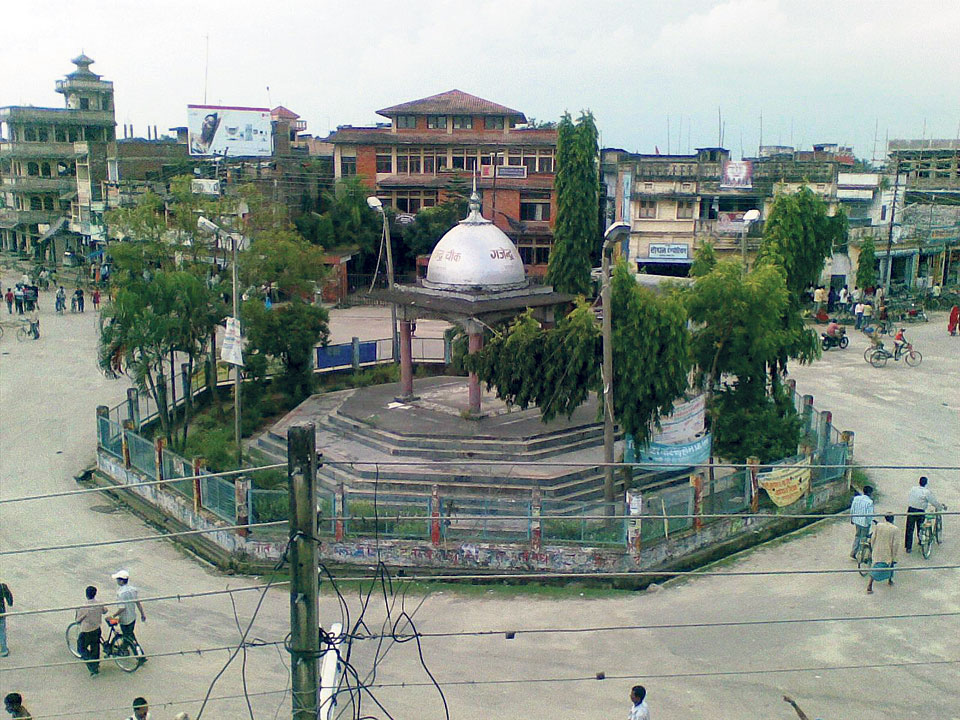RAJBIRAJ: The country’s first planned city, Rajbiraj is losing its charm to mass profusion, unmanaged drainage systems and ubiquitous pollution. Previously, a symbol of planned development, the city is on the verge of losing its former identity – walkways and vehicle lanes have now turned into public defecation sites, if not official dumping sites.
In 1983, the capital of the then Rajbiraj – Hanumannagar – suffered large scale destruction due to erosion caused by the Koshi River. Following the disastrous event, urbanization of Rajbiraj was planned using Indian city Jaypur’s ‘Pink City’ model. Prakash Shamsher Jabara, the Commander of the then East Nepal mapped 60 bighas of Rajbiraj land into the country’s first planned city. In 2016 BS, Rajbiraj was officially declared a municipality.
However, with the changing political scenario – from the Rana regime and Panchayat systems to current administration – the city has suffered severely. Former chairperson of Rajbiraj Civil Society, Bhansali expressed how decreasing people’s representation in the political and administrative scenarios over the years accounted for mismanagement of the city’s drainage systems.
New Road losing its charm

“Following the encroachment, issues of cleanliness, sanitation, parking and animal waste management started affecting the city at an alarming rate,” Bhansali says. He further added how bus parks, although constructed almost a decade earlier, have yet be fully utilized. Bhansali blames the municipality for not making proper use of the investments made for development and operations of such parks.
The country’s first planned city, Rajbiraj is losing its charm to mass profusion, unmanaged drainage systems and ubiquitous pollution. Previously, a symbol of planned development, the city is on the verge of losing its former identity – walkways and vehicle lanes have now turned into public defecation sites, if not official dumping sites.

In 1983, the capital of the then Rajbiraj – Hanumannagar – suffered large scale destruction due to erosion caused by the Koshi River. Following the disastrous event, urbanization of Rajbiraj was planned using Indian city Jaypur’s ‘Pink City’ model. Prakash Shamsher Jabara, the Commander of the then East Nepal mapped 60 bighas of Rajbiraj land into the country’s first planned city. In 2016 BS, Rajbiraj was officially declared a municipality.
However, with the changing political scenario – from the Rana regime and Panchayat systems to current administration – the city has suffered severely. Former chairperson of Rajbiraj Civil Society, Bhansali expressed how decreasing people’s representation in the political and administrative scenarios over the years accounted for mismanagement of the city’s drainage systems.
“Following the encroachment, issues of cleanliness, sanitation, parking and animal waste management started affecting the city at an alarming rate,” Bhansali says. He further added how bus parks, although constructed almost a decade earlier, have yet be fully utilized. Bhansali blames the municipality for not making proper use of the investments made for development and operations of such parks.































